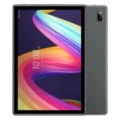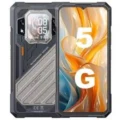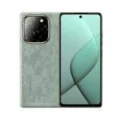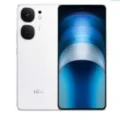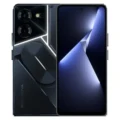HTC U19e
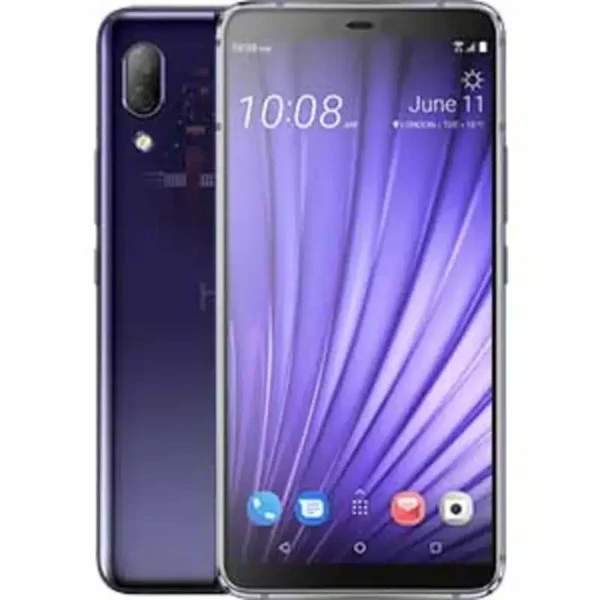




- : 6GB RAM Snapdragon 710
- : 6.0" 1080x2160 pixels
- : 3930mAh 18W
- : 12MP 2160p
HTC U19e: A Stylish and Powerful Smartphone
The HTC U19e is a sleek and powerful smartphone that offers a premium experience without breaking the bank. With its stunning design, impressive performance, and advanced features, the U19e is a great choice for anyone looking for a reliable and feature-rich device.
Design and Display
The U19e boasts a sleek and stylish design with a 6.0-inch OLED display that delivers vibrant colors and deep blacks. The 18:9 aspect ratio provides ample screen real estate for immersive gaming, video watching, and multitasking. The device is also comfortable to hold and use, thanks to its ergonomic design and lightweight build.
Performance and Battery Life
Under the hood, the U19e is powered by a Qualcomm Snapdragon 710 processor, coupled with 6GB of RAM and 128GB of internal storage. This powerful combination ensures smooth performance for even the most demanding tasks, from browsing the web to playing the latest games. The 3930mAh battery provides ample power to last through a full day of use, and the device also supports fast charging for quick top-ups.
Camera Capabilities
The U19e features a dual-camera setup on the rear, consisting of a 12MP primary sensor and a 20MP secondary sensor. This configuration allows for stunning photos and videos, with features like AI-powered scene recognition, portrait mode, and 4K video recording. The front-facing camera is also impressive, with a 24MP sensor that captures detailed selfies and supports facial recognition for secure unlocking.
Additional Features
The U19e comes with a host of additional features, including:
- Android 9.0 Pie with HTC Sense: The latest version of Android provides a smooth and intuitive user experience, while HTC Sense adds a layer of customization and optimization.
- IP68 Water and Dust Resistance: The U19e is built to withstand the elements, with IP68 water and dust resistance.
- HTC BoomSound Hi-Fi Edition: Experience immersive audio with the HTC BoomSound Hi-Fi Edition, which delivers powerful and clear sound.
- In-Display Fingerprint Sensor: Unlock your device quickly and securely with the in-display fingerprint sensor.
Conclusion
Overall, the HTC U19e is a well-rounded smartphone that offers a compelling combination of style, performance, and features. Whether you’re a casual user or a power user, the U19e has something to offer.
Specs
Network
| 2G Network GSM 850 / 900 / 1800 / 1900 - SIM 1 & SIM 2 (dual-SIM) CDMA 800 / 1900 |
GSM 850 / 900 / 1800 / 1900 - SIM 1 & SIM 2 |
| 3G Network |
HSDPA 850 / 900 / 1900 / 2100 |
| 4G Network |
1, 2, 3, 5, 7, 8, 20, 28, 38, 39, 40, 41 |
| Speed |
HSPA 42.2/5.76 Mbps, LTE (3CA) Cat15 800/150 Mbps |
LAUNCH
| Announced | June, 2025 |
| Status |
Available. Released 2019, June 11 |
BODY
| Dimensions | 156.6 x 75.9 x 8 mm (6.17 x 2.99 x 0.31 in) |
| Weight | 180 g (6.35 oz) |
| Build | Glass front (Gorilla Glass), glass back, aluminum frame |
| SIMs SIM (Subscriber Identity Module) is a small card that contains mobile network subscriber's account information. This allows the phone using the card to attach to a mobile network. The SIM card is most commonly associated with GSM and UMTS mobile networks. Moving a SIM card from one phone to another allows a subscriber to switch mobile phones without having to contact their mobile network carrier. SIM cards can also be used by a phone to store limited amounts of data, such as phone numbers and text messages. |
Hybrid Dual SIM (Nano-SIM, dual stand-by) |
Display
| Display Type Display Technology => A number of display technologies and types used in mobile phones => TFT (Thin Film Transistor), IPS (In-Place Switching), OLED (Organic Light Emitting Diode), AMOLED (Active-Matrix Organic Light-Emitting Diode), Super AMOLED (an even advanced version of AMOLED), Resistive Touchscreen (Resistive touchscreens contain two layer of conductive material with a very small gap between them which acts as a resistance), Capacitive Touchsceen (Capacitive touchscreen technology consists of a layer of glass coated with a transparent conductor) | OLED, HDR10 |
| Size | 6.0 inches, 92.9 cm2 (~78.2% screen-to-body ratio) |
| Resolution | 1080 x 2160 pixels, 18:9 ratio (~402 ppi density) |
| Protection Display Protection => Gorilla Glass is a special alkali-aluminosilicate glass shield with exceptional damage resistance that helps protect mobile displays from scratches, drops, and bumps of everyday use, It is always better to go for a smartphone with Gorilla Glass for that added protection and peace of mind. | Corning Gorilla Glass (unspecified) |
PLATFORM
| Operating System OS => Every computer system run on a base software called Operating System (OS). Operating System controls all basic operations of the computer (such as smartphone, PDAs, tablet computers and other handheld devices). The Operating System allows the user to install and run third party applications (apps), apps are used to add new functionality to the device. | Android 9.0 (Pie), HTC Sense |
| Chipset Chipset is a group of integrated circuits designed to perform one or a more dedicated functions, often with real time computing constraints, Popular smartphones are equipped with more advanced embedded chipsets that can do many different tasks depending on their programming. | Qualcomm SDM710 Snapdragon 710 (10 nm) |
| CPU CPU (Central Processing Unit) mostly known as processors, CPU processes instructions in order to carry out certain functions that make your device operate properly. Processors are often described as the brain of computers, smartphones and tablets, Smartphones and tablets rely on processors to carry out their every task, Processors are an incredibly important factor in selecting any type of computing device, including your smartphone. | Octa-core (2x2.2 GHz Kryo 360 Gold & 6x1.7 GHz Kryo 360 Silver) |
| GPU GPU (Graphics Processing Unit) is a single-chip processor designed to rapidly manipulate and alter memory to accelerate the creation of images in a frame buffer intended for output to a display, This includes things such as lighting effects, object transformations, and 3D motion. | Adreno 616 |
MEMORY
| Card Slot Memory Card Slot is a special slot for inserting a memory card. Memory cards allow you to expand the phone's built-in memory, A memory card (sometimes called a flash memory card or a storage card) is a small storage medium used to store data such as text, pictures, audio, and video, for use on small, portable or remote computing devices such as mobile phones, mp3 players, digital cameras. | microSDXC (uses shared SIM slot) |
| Internal | 128GB 6GB RAM |
MAIN CAMERA
| Cameras Specs Today’s smartphones come equipped with a very comprehensive set of camera related specifications. Our smartphone, for many of us, has become our primary camera due to it being the one we always have with us. |
12 MP, f/1.8, 26mm (wide), PDAF 20 MP, f/2.6, 52mm (telephoto), 2x optical zoom |
| Video | 4K@30fps |
| Camera Features |
Dual-LED dual-tone flash, Auto HDR, panorama |
SELFIE CAMERA
| Cameras Specs Today’s smartphones come equipped with a very comprehensive set of camera related specifications. Our smartphone, for many of us, has become our primary camera due to it being the one we always have with us. |
24 MP, f/2.0, 26mm (wide), 1/2.8", 0.9µm 2 MP, f/2.2 (depth sensor) |
| Features |
Auto HDR |
| Video | 1080p@30fps |
SOUND
| Loudspeaker | Yes, with stereo speakers |
| 3.5mm jack |
No 24-bit/192kHz Hi-Res audio |
COMMS
| WLAN |
Wi-Fi 802.11 a/b/g/n/ac, dual-band, Wi-Fi Direct |
| Positioning |
GPS, GLONASS |
| Bluetooth Bluetooth is a wireless communications technology for exchanging data between mobile phones, headsets, computers and other network devices over short distances without wires, Bluetooth technology was primarily designed to support simple wireless networking of personal consumer devices. | 5.0, A2DP, LE |
| Infrared Infrared connectivity is an old wireless technology used to connect two electronic devices. It uses a beam of infrared light to transmit information and so requires direct line of sight and operates only at close range. | |
| USB | USB Type-C 3.1 |
| NFC NFC (Near field communication) is a set of standards for smartphones and similar devices to establish peer-to-peer radio communications with each other by touching them together or bringing them into proximity, usually no more than a few inches. | |
| Radio |
Features
| Sensors Sensors are electronic components that detects and responds to some type of input from the physical environment. The specific input could be light, heat, motion, moisture, pressure and location, The output is generally a signal that is converted to use in computing systems, a location sensor, such as a GPS receiver is able to detect current location of your electronic device. |
Iris scanner, fingerprint (rear-mounted), accelerometer, gyro, proximity, compass |
BATTERY
| Battery Type Battery Type => Cell phones run on various kinds of batteries depending on the manufacturer, phone size or shape and features. There are basically four types of cell phone batteries => Lithium Polymer, Lithium Ion, Nickel Metal Hydride and Nickel Cadmium. | Li-Ion (Lithium Ion) |
| Capacity Battery Capacity is a measure (typically in Amp-hr) of the charge stored by the battery, and is determined by the mass of active material contained in the battery. The battery capacity represents the maximum amount of energy that can be extracted from the battery under certain conditions. | 3930 mAh |
| Placement | non-removable |
| Charging The functionality responsible for recharging batteries in portable devices, such as mobile phones, significantly influences both battery lifespan and the practicality of daily product usage.The charging process, encompassing factors like voltage, current, and completion actions, is contingent upon the battery's size and type.Contemporary battery chargers dynamically adjust charging parameters based on the battery's current charging state. Charging an empty battery poses no safety risk, allowing for a quicker charging process. Consequently, many charging speed benchmarks, including ours, specify the battery level achieved after a 30-minute session on an empty battery.Standard chargers with a power output of 5V/1A, equivalent to 5W, serve as a baseline, with anything surpassing this speed classified as quick or fast charging. | 18W wired, QC4 |
MISC
| Colors |
Extraordinary Purple, Modest Green |
| Price |
About 420 EUR |
TESTS
Reviews
Disclaimer Note
We strive to maintain accurate and up-to-date content on our website for general information purposes only. Please refrain from using the material for business, legal, or any other decisions.




